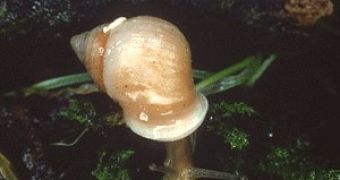Snails don't fly, nor can they swim in the sea (at least those connected to tree life), so that researchers were puzzled for over a century about how Tahitian tree snails (Partula hyalina) "jumped" from Tahiti to two relatively distant Polynesian islands, Austral and Southern Cook Islands. More puzzling was the fact that while the Tahiti snail population displays a wide array of shell colors, the island-hoppers are all white.
A new research has found the secret: fancy ancient Polynesians. The white shells were the most valuable for jewelry and were spread more by the natives. That's why the white-shelled snails were carried alive and raised on other islands.
The oddity had three aspects: the multi-island distribution of P. hyalina, as species in the Partulidae family are typically restricted to a sole island; the presence of just the white-shelled variety on the Austral and Southern Cook islands, and the absence of P. hyalina on Tahiti's nearest neighbors, like Moorea and the other islands in the Society archipelago.
Many tried to explain this through an involuntary introduction of the tree snails to Tahiti and other islands. But in this case, the species would have been distributed somewhat randomly among the islands, with nearby islands being more likely to harbor them.
"The fact that they're not present on nearby islands suggests deliberate introduction to the more distant archipelagos," said lead author Diarmaid O'Foighil of the University of Michigan's Museum of Zoology.
O'Foighil's team made genetic analyses of snails from the three islands and discovered that all of them came from Tahiti, thus the snails were voluntarily transported from Tahiti to the other islands. The fashion item followed the basic economic rules of supply and demand.
"We know that Polynesians used these shells ornamentally. We think the fact that the white shells were aesthetically valuable within this regional trading network explains their unusual distribution," said O'Foighil.
On Tahiti, the abundant white snail shells would have had a low "cost", but on more remote islands, the value would boom. For the dwellers of nearby Moorea, demand for the shells would be a little higher compared to Tahiti. But on more distant islands, the white shells would have been an appreciated item and the long journey to Tahiti was worth the efforts to bring back live tree snails and grow them.
"The combination of aesthetic preference and fashionability made the unlikely introduction possible," said O'Foighil.

 14 DAY TRIAL //
14 DAY TRIAL //